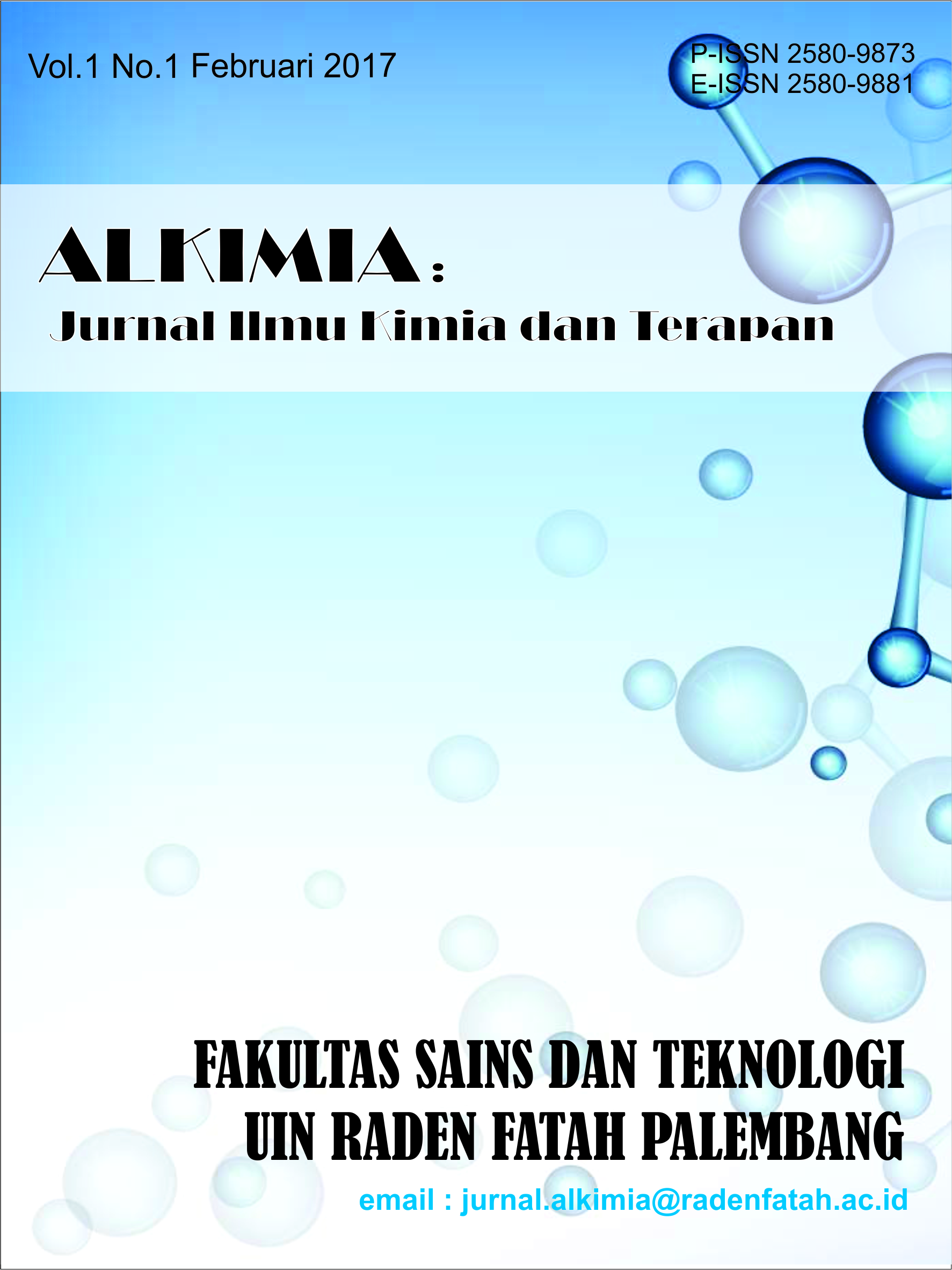Evaluation of Syzygium myrtifolium leaves extract as an eco-friendly inhibitor for steel in reinforced concrete
Main Article Content
Abstract
Article Details

This work is licensed under a Creative Commons Attribution-ShareAlike 4.0 International License.
- The author saves the copyright and gives the journal simultaneously with the license under Creative Commons Attribution License which permits other people to share the work by stating that it is firstly published in this journal.
- The author can post their work in an institutional repository or publish it in a book by by stating that it is firstly published in this journal.
- The author is allowed to post their work online (for instance, in an institutional repository or their own website) before and during the process of delivery. (see Open Access Effect).
How to Cite
References
D. Mardiana, E. Ginting, and A. Riyanto, “Efektivitas Ekstrak Daun Jambu Biji (Psidium Guajava l.) Sebagai Inhibitor Pada Baja Karbon St37 dalam Medium Korosif NaCl 3%,” Journal of Energy, Material, and Instrumentation Technology, vol. 1, no. 3, pp. 119–125, Nov. 2020, doi: 10.23960/JEMIT.V1I3.128.
A. Kuat et al., “Analisa Kuat Lentur Balok Beton Bertulang dengan Menggunakan Profil Baja Ringan sebagai Tulangan,” Teknika Sains: Jurnal Ilmu Teknik, vol. 6, no. 1, pp. 24–34, Aug. 2021, doi: 10.24967/TEKSIS.V6I1.1233.
Sugeng Hendik Purwanto, “Evaluasi Karakteristik Baja Tulangan Beton Di Malang Raya Berdasarkan Standar SNI 2052-2017,” Aptek, vol. 13, no. 2, pp. 59–68, Jul. 2021, doi: 10.30606/APTEK.V13I2.814.
B. Mahardika, “Studi Eksperimen Pengaruh Variasi Inhibitor Dan Konsentrasi Inhibitor Terhadap Laju Korosi Dan Penentuan Efisiensi Inhibisi Pada Baja Tulangan Beton St 42 Di Kondisi Lingkungan Laut,” 2016.
A. (Arini) Nikitasari, M. S. (Moch) Anwar, E. (Efendi) Mabruri, and S. (Sundjono) Sundjono, “Evaluasi Inhibitor Sodium Nitrit di dalam Larutan Beton Sintetis,” Jurnal Sains Materi Indonesia, vol. 16, no. 1, pp. 12–18, 2014, doi: 10.17146/JSMI.2014.16.1.4327.
H. Simanjuntak, E. Ginting, and S. Suprihatin, “Pengaruh Penambahan Inhibitor Ekstrak Kopi Dan Waktu Perendaman Terhadap Laju Korosi Pada Baja Karbon Aisi 1020 Dalam Larutan Nacl 3%,” Jurnal Teori dan Aplikasi Fisika, vol. 07, no. 02, pp. 239–248, Jul. 2019, Accessed: Mar. 05, 2025. [Online]. Available: https://jtaf.fmipa.unila.ac.id/index.php/jtaf/article/view/226
K. A. Roni, E. Elfidiah, E. Yuliwati, and B. Marselia, “PENAMBAHAN INHIBITOR EKSTRAK DAUN PEPAYA (CARICA PAPAYA L.) TERHADAP PENGARUH LAJU KOROSI PADA BAJA KARBON DALAM LARUTAN AIR LAUT,” Jurnal Redoks, vol. 7, no. 1, pp. 28–35, Jul. 2022, doi: 10.31851/REDOKS.V7I1.7005.
N. Al Otaibi and H. H. Hammud, “Corrosion Inhibition Using Harmal Leaf Extract as an Eco-Friendly Corrosion Inhibitor,” Molecules 2021, Vol. 26, Page 7024, vol. 26, no. 22, p. 7024, Nov. 2021, doi: 10.3390/MOLECULES26227024.
S. Abbas Abdulsada, A. I. Al-Mosawi, A. Amer, and A. A. Amer Hadi, “Studying the Effect of Eco-addition Inhibitors on Corrosion Resistance of Reinforced Concrete,” Bioprocess Engineering, vol. 1, no. 3, pp. 81–86, 2017, doi: 10.11648/j.be.20170103.14.
B. Tan et al., “Papaya leaves extract as a novel eco-friendly corrosion inhibitor for Cu in H2SO4 medium,” J Colloid Interface Sci, vol. 582, pp. 918–931, Jan. 2021, doi: 10.1016/J.JCIS.2020.08.093.
S. Harsimi, M. A. Sultan, and M. Y. H. Abbas, “PENGGUNAAN ABU SEKAM PADI SEBAGAI INHIBITOR ALAMI PADA TULANGAN BETON BERTULANG,” JURNAL SIPIL SAINS, vol. 9, no. 2, 2019, doi: 10.33387/SIPILSAINS.V9I18.1308.
M. Ben Harb, S. Abubshait, N. Etteyeb, M. Kamoun, and A. Dhouib, “Olive leaf extract as a green corrosion inhibitor of reinforced concrete contaminated with seawater,” Arabian Journal of Chemistry, vol. 13, no. 3, pp. 4846–4856, Mar. 2020, doi: 10.1016/J.ARABJC.2020.01.016.
N. Barmawi, M. A. Sultan, and M. Y. H. Abbas, “Pengaruh Konsentrasi Ekstrak Daun Tembakau Sebagai Inhibitor Pada Tulangan Beton Bertulang,” Rekayasa Sipil, vol. 15, no. 1, pp. 16–21, Feb. 2021, doi: 10.21776/UB.REKAYASASIPIL.2021.015.01.3.
S. A. Asipita, M. Ismail, M. Z. A. Majid, Z. A. Majid, C. Abdullah, and J. Mirza, “Green Bambusa Arundinacea leaves extract as a sustainable corrosion inhibitor in steel reinforced concrete,” J Clean Prod, vol. 67, pp. 139–146, Mar. 2014, doi: 10.1016/J.JCLEPRO.2013.12.033.
R. H. Kusriani, S. M. Rosandhy, and E. Elfahmi, “Luteolin, a flavonoid from Syzygium myrtifolium Walp.,” Current Research on Biosciences and Biotechnology, vol. 1, no. 1, pp. 31–33, Aug. 2019, doi: 10.5614/CRBB.2019.1.1/FKAN4064.
Elfidiah, D. Kharismadewi, and E. Yuliwati, “Wuluh starfruit (Averrhoa bilimbi linn.) leaves extract as green corrosion inhibitor in reinforced steel,” J Phys Conf Ser, vol. 1444, no. 1, p. 012003, Jan. 2020, doi: 10.1088/1742-6596/1444/1/012003.
I. A. Abro, M. I. Abro, M. E. H. Assad, M. Rahimi-Gorji, and N. M. Hoang, “Investigation and evaluation of neem leaves extract as a green inhibitor for corrosion behavior of mild steel: An experimental study,” https://doi.org/10.1177/0954406220937723, vol. 235, no. 4, pp. 734–743, Jul. 2020, doi: 10.1177/0954406220937723.
H. M. Yang, “Role of Organic and Eco-Friendly Inhibitors on the Corrosion Mitigation of Steel in Acidic Environments—A State-of-Art Review,” Molecules 2021, Vol. 26, Page 3473, vol. 26, no. 11, p. 3473, Jun. 2021, doi: 10.3390/MOLECULES26113473.
